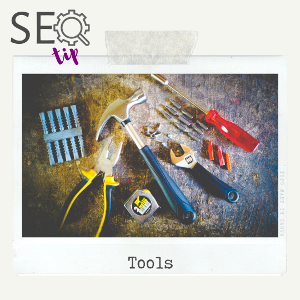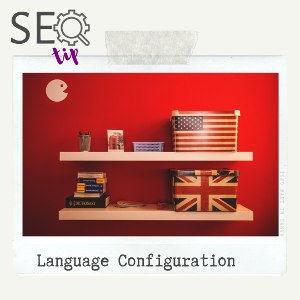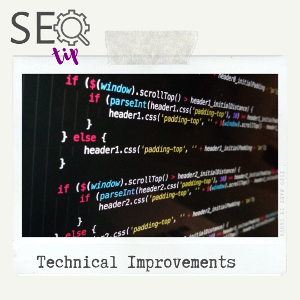If you have your own website, you certainly would like to get as many visitors as possible, so now I want to introduce you 8 tips that will help you by improving your SEO. You have probably heard something about SEO, but do you know what it is?
Table of Content
1. “Don’t rise your voice, improve your Content”
2. Organize your content in Categories
3. Take advantage of the different tools available
4. Configure a sitemap of your website
5. Take care of the images you use
6. Try to include links in your website
7. Use the proper language configuration
8. Further technical recommendations
What is SEO?
SEO or Search Engine Optimization, is all characteristics of your website and activities in general, that contribute to be found online such as content, marketing strategy and how your website is developed.
It is possible to improve your SEO working on your website content, posting information of interest for you customers, but you should also consider some other details that will certainly help you in your journey. Here I want to present you 8 tips to improve your SEO

1. “Don’t rise your voice, improve your Content”
The first thing you have to work on, is your website content. Without it, your website hardly will rank in any Search Engine, since there is not so much to offer. And even if you work in a wonderful content today, but you keep it unchanged during a long period of time, tomorrow, all your work will be in vain.
You need to keep your target audience engage, introduce new content from time to time, and this content should be good enough so your visitors actually enjoy visiting your website. If they stay longer in your website, you bouncing rate will improve and this is a good signal for your goal.

2. Organize your content in Categories
If you manage a blog you must be familiar with the concept of Categories and Tag s. So, if you want to work on your SEO, you have to take into account that just Categories have an effect on how your website is ranked, tags don’t.
Categories sort your content depending on the topics and help search engines to understand the content and the structure of your website.
Therefore, how you define your categories is a really important step on website configuration.

3. Take advantage of the different tools available
Google is the most important Search Engine nowaday, so a good a idea in order to improve your SEO is to use some of the tools they have available.
One of these tools is the Google Search Console. Here you can register your website URL and get information that might help you to understand what your visitors are looking for. Some of the information you can get out of it, it’s some words used when your website appears in the results. This will help to indentify which words you could use as keywords or not, among other things
You could also use Google Analytics, which will help you to understand what the kind of users visit your website, how long they stay there, which pages they visit, which kind of devices they use to access your website, etc.
In general, this kind of tools won’t do the job for you, but all the information they provide will help you to evaluate which element of your website should be improved, where you could post certain information to keep your audience engaged and eventually gain more customers.

4. Configure a sitemap of your website
One thing you can also do with this tool is register the XML Sitemap of your website. Sitemaps help Search Engine to understand your website. This file lists every single page you have posted on your website (or at least those that you want to be found). This help the search engines to find your content easier.

5. Take care of the images you use
Images are an important feature of your content, adding value to it. However, they might be heavy and slow down your website.
So a good practice is to compromise and use the lowest resolution possible of the image you want to publish, without losing quality. You can also use an optimizer plugin to compress them.
You should also include some keywords as name of your images, so search engines can understand them also. Keep in mind that it is also possible to search images, therefore, naming your images properly could help you to rank better.

6. Try to include links in your website
Search engines give a score to every page on your website and internal links are some of the factors they take into account. Therefore a good recommendation would be to link all your pages (including blog posts) to each other.
By doing this you encourage or help your visitors to stay longer on your website.
Something also good, and quite convenient, is that others websites include links to yours. This doesn’t always depends on you, but it will definitely help you to gain some visitors from referral.
You can also share links of your website in different Social Networks, so your followers there can also visit your website.

7. Use the proper language configuration
Each page should be configured with the corresponding language, that is, if the content page is in English, the headers should be configured for a page in English (hreflang configuration). This configuration can show to search engines not only the specific language of the content, but also set the targeted language based on the region (for example, English from USA and English from UK) which also help you with your local SEO.
Besides, each page should include content in just one language. If you mix languages in one single page, it will under perform. This is because search engine expect to find content in certain given language on the page therefore, it won’t understand what it is suppose to be your keyword within the content in a different language. In other words, if it finds content in some other language you won’t get the expected results.
There are many other things you can do to improve your ranking, but we can check that in another post. Meanwhile, let me know what you do to improve your SEO. I read you in the comments.

8. Further technical recommendations
Besides what we have mention so far, there are some others technical details you can take of and improve your websites performance. Without getting to much into details we could mentions the following:
- Do not forget to configure the ALT feature of all your images.
- Be aware of what is included in your robot.txt file.
- Include some of your keywords in the title of your post.
- Include one H1 heading in every page.
- Improve the page response time.
- Try to reduce the number of used CSS and JS files.
